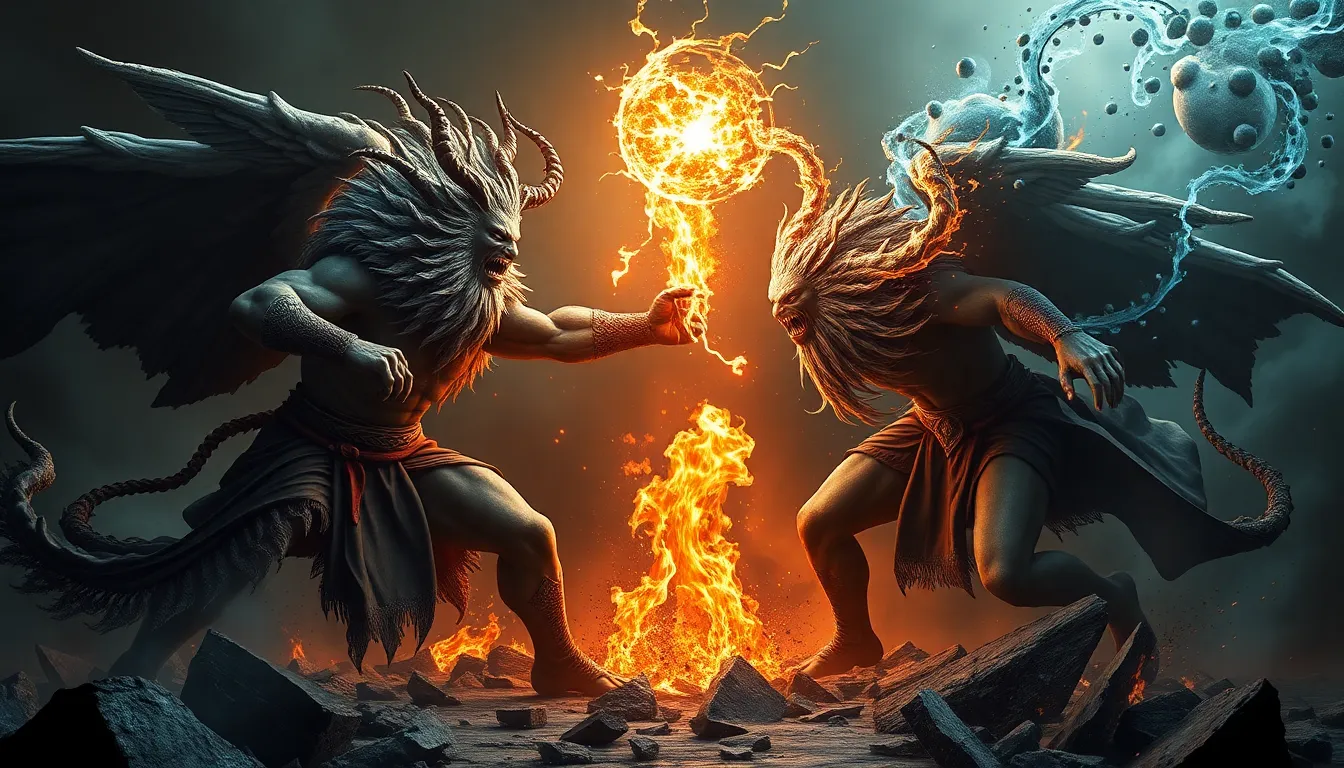Filipino Folklore: Unveiling the Secrets of Mythical Mountains
The Philippines, an archipelago of over 7,000 islands, is known for its stunning natural beauty, with towering mountains playing a central role in the landscape, culture, and folklore of the nation. For centuries, Filipinos have looked to these majestic peaks with both awe and reverence, weaving intricate tales of mythical beings, deities, and sacred spaces. In Filipino folklore, mountains are not merely geographical features but are infused with spiritual significance, representing the heart and soul of the land.
The Mountain as Sacred Space
In the tapestry of Filipino folklore, mountains are often depicted as sacred spaces, dwelling places of powerful spirits and deities. They are seen as intermediaries between the earthly realm and the spiritual world, serving as gateways to the unseen. Ancient beliefs hold that spirits reside in mountain caves, waterfalls, and forests, and that certain peaks are considered sacred grounds for rituals and offerings.
For example, Mount Apo, the highest peak in the Philippines, is revered by the indigenous people of Mindanao as the abode of spirits and the ancestor of all living things. Similarly, Mount Banahaw in Luzon is considered a sacred mountain by some Filipinos, believed to possess healing powers and mystical energy. It’s common to see people trekking to these locations to seek spiritual guidance, healing, or to simply connect with nature's powerful energy.
Spirits and Deities of the Mountains
The mountainous regions of the Philippines are populated by a rich cast of mythical beings, each with their own unique stories and roles in the local folklore. Among these are the diwata or fairies, often associated with beauty, grace, and the natural world. They are known to reside in forests, caves, and waterfalls, and are said to bless those who treat nature with respect.
Another prominent figure in Filipino mountain mythology is the kapre, a giant, cigar-smoking spirit who guards the forests. Though often depicted as mischievous and prone to pranks, kapre are also seen as protectors of the natural world. They are believed to be powerful and can inflict harm on those who disrespect nature.
The Role of Mountains in Creation Myths
The origins of the Philippines and its people are often explained through creation myths that feature mountains prominently. One common myth tells the story of how the islands were formed from the body of a giant who was slain by the gods. Another myth describes how the first Filipinos emerged from a giant egg that was laid on top of a mountain.
These myths highlight the importance of mountains in the Filipino worldview. They represent the origin of the land and its people, connecting the present to the past and emphasizing the sacredness of the natural world.
Mountain as a Source of Power and Knowledge
In many Filipino folktales, mountains are portrayed as sources of power and knowledge. They are seen as places where heroes and heroines go to seek wisdom, strength, and inspiration. These stories often involve the hero facing trials and tribulations on the mountain, ultimately emerging with newfound knowledge or abilities.
For example, the story of Lam-ang, a legendary hero from the Ilocos region, features a scene where he journeys to the top of a mountain to obtain a magical weapon that helps him defeat a monstrous enemy. This journey signifies a transformation in Lam-ang, representing a passage from youth to adulthood and the acquisition of power.
Mountains as Sites of Transformation and Ritual
Mountains are not only seen as places of power and knowledge, but also as sites of transformation and ritual. Many indigenous communities in the Philippines have rituals and ceremonies that are performed in mountain areas, such as offerings to ancestral spirits, harvest festivals, and rites of passage. These rituals acknowledge the spiritual significance of the mountains and their connection to the realm of the unseen.
Mountain pilgrimages are also common in Filipino culture, with many people undertaking these journeys for spiritual renewal and to seek divine intervention.
These rituals and pilgrimages highlight the enduring relationship between Filipinos and their mountains, emphasizing the role of these landscapes in shaping their cultural and spiritual identities.
The Significance of Mountain Names and Legends
The names and legends associated with Filipino mountains offer valuable insights into the cultural beliefs and historical experiences of the people. Many mountain names are derived from local languages and reflect the unique characteristics of the landscape, such as the presence of waterfalls, caves, or specific types of trees. For instance, Mount Makiling, located in Laguna, is named after the mythical creature "Makiling," a beautiful woman who is said to have been transformed into a mountain.
Legends surrounding mountains often serve as cautionary tales, highlighting the dangers of the natural world and the consequences of disrespecting the spirits that reside there. Some stories warn against venturing into certain areas, while others depict the importance of following traditional customs and respecting the local environment.
Folklore and the Real Landscape: Exploring the Relationship
Filipino mountain folklore is not simply a collection of imaginative stories but is deeply intertwined with the real landscape and the everyday lives of the people. Mountains provide essential resources such as water, timber, and fertile land, and these factors have influenced the development of local customs, beliefs, and economies.
Folklore helps to explain natural phenomena, such as earthquakes, volcanic eruptions, and weather patterns. The spirits and deities that inhabit mountains are often seen as responsible for these events, and rituals are performed to appease them or seek their favor. This interweaving of folklore and reality underscores the importance of mountains in the lives of Filipinos and their connection to the natural world.
The Impact of Colonization on Mountain Mythology
The arrival of the Spanish in the Philippines in the 16th century brought about significant changes to Filipino culture, including the introduction of Christianity and the suppression of indigenous beliefs. Mountain folklore was not immune to these changes, as many stories were reinterpreted or lost. However, despite the efforts of the Spanish to impose their own cultural norms, many indigenous beliefs and practices persisted, often being adapted to incorporate Christian elements.
This fusion of indigenous and colonial influences can be seen in the stories of saints and miracles that are often associated with specific mountains. For example, Mount Banahaw is believed by some Filipinos to be a sacred site where Jesus Christ appeared, blending Christian beliefs with indigenous notions of spirituality and the mystical powers of mountains.
The Enduring Power of Mountain Lore
Despite the challenges posed by colonization and modernization, Filipino mountain folklore continues to thrive in contemporary society. The stories that have been passed down through generations continue to influence the cultural identity of Filipinos, offering a sense of connection to their history and heritage.
The popularity of mountain trekking and eco-tourism in the Philippines has also contributed to the revitalization of mountain lore. Many Filipinos are rediscovering the stories and beliefs associated with these landscapes, appreciating their cultural significance and the importance of preserving these traditions for future generations.
Contemporary Interpretations of Mountain Myths
Filipino mountain folklore is not static but is constantly evolving, with contemporary artists, writers, and filmmakers reinterpreting traditional stories in new and innovative ways. These modern interpretations explore themes of environmentalism, social justice, and cultural identity, offering fresh perspectives on the enduring power of these stories.
For example, the Filipino film "Anak ng Dilim" (Child of Darkness), released in 2019, reimagines the legend of the kapre as a symbol of the destructive power of greed and the need to protect the environment. This reinterpretation demonstrates how traditional folklore can be used to address contemporary social and environmental concerns, reminding viewers of the importance of respecting the natural world.
FAQ
What is the significance of mountains in Filipino folklore?
Mountains in Filipino folklore are considered sacred spaces, dwelling places of spirits and deities. They represent the heart and soul of the land and connect the earthly realm with the spiritual world.
What are some of the mythical beings associated with mountains in Filipino folklore?
Some prominent mythical beings associated with mountains in Filipino folklore include:
- Diwata (Fairies): beautiful and graceful spirits who dwell in forests, caves, and waterfalls.
- Kapre: giant, cigar-smoking spirits who guard the forests.
- Aswang: shape-shifting creatures who are often associated with dark magic and danger.
How have mountains shaped the cultural identity of Filipinos?
Mountains have played a significant role in shaping the cultural identity of Filipinos. They have influenced the development of local customs, beliefs, and economies. Folklore surrounding mountains provides a sense of connection to history and heritage, and highlights the importance of respecting the natural world.
What is the impact of colonization on Filipino mountain folklore?
The arrival of the Spanish introduced Christianity and suppressed indigenous beliefs, leading to some reinterpretation or loss of mountain folklore. However, many indigenous beliefs persisted, often being adapted to incorporate Christian elements.
How is Filipino mountain folklore relevant in contemporary society?
Filipino mountain folklore continues to thrive in contemporary society through modern interpretations in art, literature, and film. These reinterpretations explore themes of environmentalism, social justice, and cultural identity, reminding Filipinos of the importance of respecting the natural world and connecting with their heritage.



